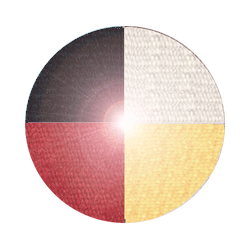[Note: If you have not read yet the pages about the Circle and Directions, please consider doing that now, before you read this page. Those pages should ideally be read in this order: Circle, East, South, West, North.]
 Everything is connected in the Center. So it’s easy to see that the Center is the structural lynchpin of the Circle as well as its heart, giving life to all our projects. It’s sometimes more difficult to perceive that the Center is also the dynamic engine that lies at the heart of the living earth. This can be understood by considering the structure in its larger, more mythic sense.
Everything is connected in the Center. So it’s easy to see that the Center is the structural lynchpin of the Circle as well as its heart, giving life to all our projects. It’s sometimes more difficult to perceive that the Center is also the dynamic engine that lies at the heart of the living earth. This can be understood by considering the structure in its larger, more mythic sense.
In that larger sense, the crosspieces don’t just “mark” the cardinal directions; they actually are the East, South, West, and North. When these crosspieces and the directions they embody come together, they create the Circle in the space around and between them. This Circle is the land itself.
The dynamic, creative nature of the Center can be understood by noticing the verbs just used to explain the structures:
~The crosspieces and directions come together.
~When they do this, they create the Circle.
The Center is therefore the place where everything comes together, and also — simultaneously — the place where new things emerge.
Continue within the Center, to Integrated Ways of Knowing and Learning.
Go back around to the starting direction, East.
You may use the table below to explore the directions, their associated ways of knowing and learning, and an example of each type of learning as applied to understanding tornadoes.
